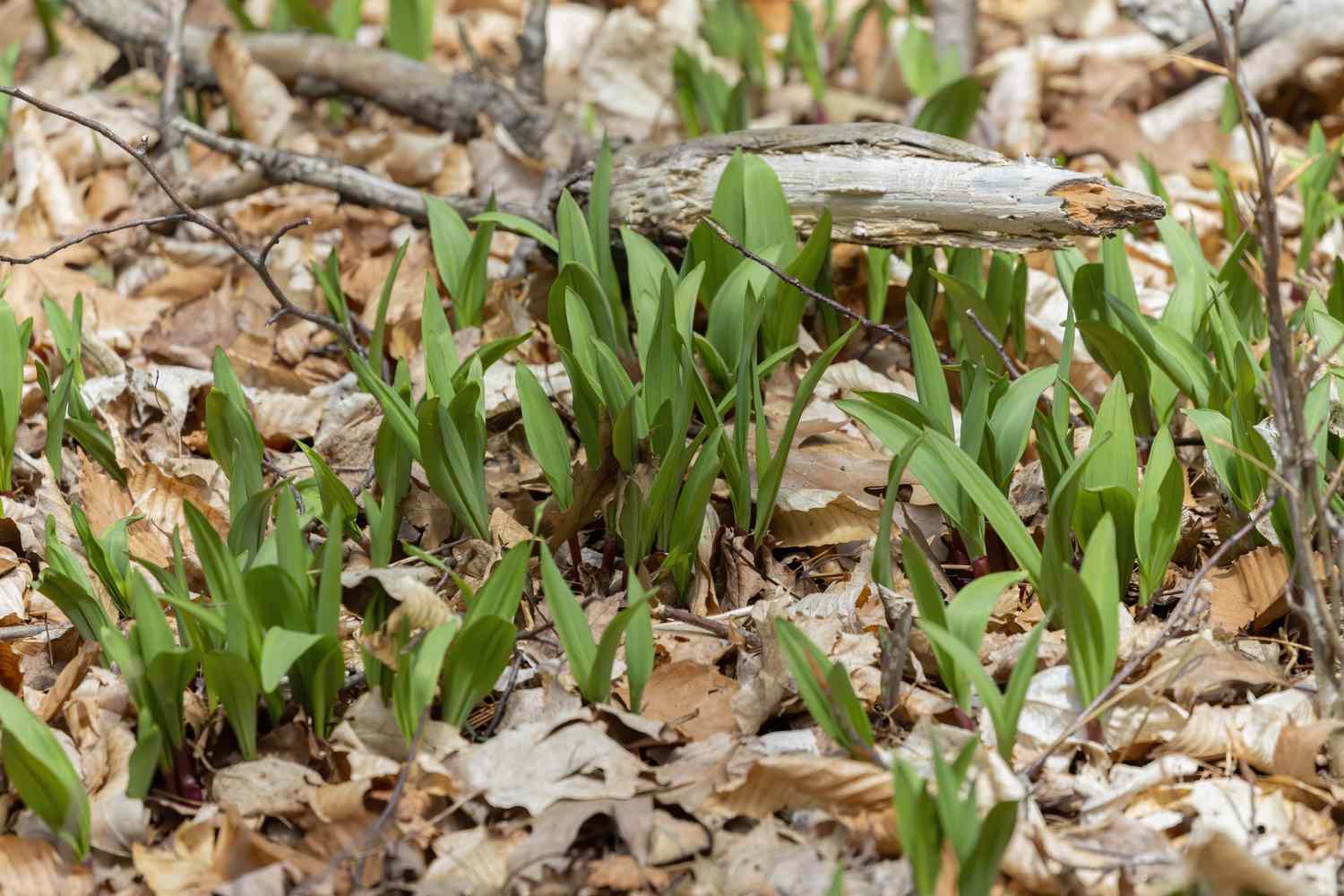Eating Appalachian: All About Ramps
go.ncsu.edu/readext?929119
en Español / em Português
El inglés es el idioma de control de esta página. En la medida en que haya algún conflicto entre la traducción al inglés y la traducción, el inglés prevalece.
Al hacer clic en el enlace de traducción se activa un servicio de traducción gratuito para convertir la página al español. Al igual que con cualquier traducción por Internet, la conversión no es sensible al contexto y puede que no traduzca el texto en su significado original. NC State Extension no garantiza la exactitud del texto traducido. Por favor, tenga en cuenta que algunas aplicaciones y/o servicios pueden no funcionar como se espera cuando se traducen.
Português
Inglês é o idioma de controle desta página. Na medida que haja algum conflito entre o texto original em Inglês e a tradução, o Inglês prevalece.
Ao clicar no link de tradução, um serviço gratuito de tradução será ativado para converter a página para o Português. Como em qualquer tradução pela internet, a conversão não é sensivel ao contexto e pode não ocorrer a tradução para o significado orginal. O serviço de Extensão da Carolina do Norte (NC State Extension) não garante a exatidão do texto traduzido. Por favor, observe que algumas funções ou serviços podem não funcionar como esperado após a tradução.
English
English is the controlling language of this page. To the extent there is any conflict between the English text and the translation, English controls.
Clicking on the translation link activates a free translation service to convert the page to Spanish. As with any Internet translation, the conversion is not context-sensitive and may not translate the text to its original meaning. NC State Extension does not guarantee the accuracy of the translated text. Please note that some applications and/or services may not function as expected when translated.
Collapse ▲
Photo Credit: Southern Living
April means RAMPS in Western North Carolina! Ramp digging and making lovely Appalachian meals with the wonderful wild onion delicacy is one of my favorite parts of this time of year. The secret is out as far as ramps are concerned too… even Bon Appetit magazine has an article out about them this year!
Where to find Ramps in Haywood County
I have driven to every produce stand in the county searching for ramps (and creasy greens) to have an Appalachian feast! If you need ramps, check out:
- Owl Produce Market – Old Asheville Highway, Canton ***cash only***
- Duckett’s Produce Stand – 6160 Carolina Blvd., Canton, (828) 648-7096
- Presnell’s Produce and More – 6209 Crabtree Rd., Clyde, (828) 627-0440
- Bonnie’s Mountain Produce – 320 Riverbend St., Hazelwood ***cash only***
- Christopher Farms – 2266 Crymes Cove Rd., Waynesville, (828) 456-3010
Taken from NC State Extension’s article:
Cultivation of Ramps (Allium tricoccum and A. burdickii)
Ramps, Allium tricoccum or Allium tricoccum, var. burdickii, also known as wild leeks, are native to the eastern North American mountains. They can be found growing in patches in rich, moist, deciduous forests and bottoms from as far north as Canada, west to Missouri and Minnesota, and south to North Carolina and Tennessee. In early spring, ramps send up smooth, broad, lily-of-the-valley-like leaves that disappear by summer before the white flowers appear. The bulbs have the pleasant taste of sweet spring onions with a strong garlic-like aroma.
As one of the first plants to emerge in the spring, ramps were traditionally consumed as the season’s first “greens.” They were considered a tonic because they provided necessary vitamins and minerals following long winter months without any fresh vegetables. Traditions evolved around the annual gathering and preparation of this pungent plant. Throughout the mountains of the eastern United States, including many western North Carolina counties, annual spring ramps festivals are held. These festivals are major tourist attractions and are actively promoted by the communities in which they are held. The tremendous volume of ramps consumed at these festivals are gathered from the forests. In many areas, the annual intensive harvesting is seriously damaging the wild populations of ramps. Studies in Canada and Ohio demonstrated that ramps are very sensitive to how they are harvested. Years ago, gatherers would only take a small number of bulbs from a population. Now the demand for ramps is so great, the entire population is often harvested.
Ramps are now very popular among consumers. Ramps are served in restaurants, sold in supermarkets, and sought after by chefs and cooks across the country. This has created an increasing demand for large, consistent supplies of the wild forest plant. Thus, in an effort to conserve native populations and meet rising demand, cultivation of ramps is strongly encouraged. Harvesting ramps from easily accessible, concentrated plantings would not only benefit festival participants, chefs, and consumers, but also create a new marketable product for the commercial grower. Native populations would be allowed to regenerate and multiply as ramps gain recognition and popularity among consumers.
Since almost all ramps consumed are harvested from wild populations, information on growing ramps is very limited. We have conducted research on developing efficient, practical, and sustainable production practices for ramps for many years. The practices described in this publication are based on our research, personal experiences, and those of experienced ramp growers in the Appalachian mountains.
Sustainable Harvesting of Ramps
Check out Jim Hamilton, Watagua County Extension Director, showing you how to harvest your ramps sustainably so that we do not decimate wild populations of this amazing food!
Growing Your Own Ramps
Check out this webpage from NC State Extension that includes information on how to locate vendors for ramp seeds and bulbs — so you can start your own forest farm!
Ramp Recipes
For the country cooks and celebrated foodies among us, here is a selection of recipes from around the web that will let you truly embrace the ramp:




